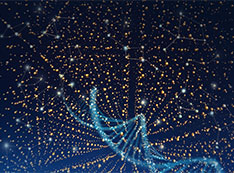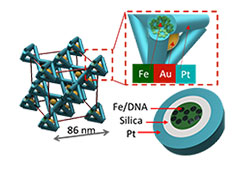Safety Update
improvements to CFN safety
May 23, 2022

Wai-Lin Ng
Proposal Review
We are pleased to roll out some changes to the CFN proposal review process that will help to enhance safety awareness and improve the evaluation of user projects. While we recognize most hazards when working in our labs, knowing what new hazards may be introduced by users as part of their work allows us to help determine the safety precautions necessary to do the work when they come on-site. We start by asking about the materials you will bring or ship, and how you will use them.
When a user submits a proposal, they will be asked to complete two new safety screening questions:
1. Do you plan to bring items with special hazards identified below?
- hydrofluoric acid
- reactive chemicals
- explosive/ energetic materials
- radioactive materials
- biohazardous materials
- human-derived materials
- Class 3B or 4 lasers
- unbound nanomaterials (powder/ solution)
- electrical equipment
2. Are there additional work hazards or safety issues not addressed in the above?
Materials with special hazards may not be permitted at the CFN or may be restricted to limited quantities. Knowing what to expect up front allows us to ask users more questions to assess safety as part of the feasibility review. Furthermore, extra time may be needed for an evaluation by subject matter experts and for meeting additional requirements.
Once a proposal has been deemed “feasible,” the user must submit a more detailed safety summary using the new Safety Approval Form (SAF) that was recently put in place. Users must identify the hazards associated with each material they are bringing or using and attach a Safety Data Sheet (SDS) for materials not already available at the CFN. They must provide sufficient information to assess the work processes and direct the review team on where to focus on hazards and risks.
Electrical Safety
All equipment being brought to CFN must be listed on your SAF. It is essential that this equipment be inspected prior to use. In addition to the inspection, all electrical equipment should bear the marking of a Nationally Recognized Testing Laboratory (NRTL). Examples of NRTLs include Underwriters Laboratories, Inc. (UL) or the Canadian Standards Association (CSA). To view the entire list of acceptable NRTLs, visit U.S. Department of Labor Occupational Safety and Health Administration website.
You can help speed the process of on-site inspection by sending the make, model number(s), and specifications for your equipment to CFN Electrical Equipment Inspector, James Buddenhagen (jbuddenhagen@bnl.gov). Before your visit to CFN, you should check your equipment to ensure the following:
- Grounded chassis
- 3-wire plugs or double-insulated enclosures
- Fused inputs
- No gaps/holes large enough to access live parts
Electrical equipment that is not NRTL marked will need a more thorough inspection by the Electrical Equipment Inspector upon arrival. Please note that any electrical equipment set up before an inspection must remain unplugged.
The purpose for these new changes to our safety review procedures is to improve hazard identification and hazard analysis. We want to ensure a safe working environment and wish you much success in your research. As always, I welcome your feedback on how we can do things better.
— Wai-Lin Ng
ES&H Manager
2022-20613 | INT/EXT | Newsroom










